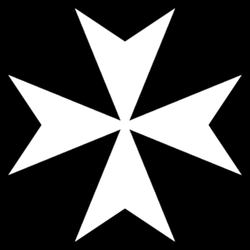Foundation and endowment
The preceptory was founded in the mid-12th century. [1] At, or shortly after foundation, "Archbishop William" (probably Saint William FitzHerbert, Archbishop of York; 1143–54) granted the preceptory the church at Ossington. At sometime before 1199 the churches at Averham and Winkburn, both in Nottinghamshire, were donated by Henry Hosatus. [2]
Towards the end of the 12th century, the village of Ossington was granted to the preceptory by Roger de Buron. However, later in his life Roger joined the Cluniac Order, and bestowed the village on Lenton Priory. This caused "considerable litigation" between the two monasteries. In 1204 Roger's son, Walter Smallet, confirmed the grant of Ossington to the preceptory, but Lenton did not drop their claim until 1208. [2]
By 1230 the preceptory had also gained the churches at Marnham and Sibthorpe, as their right to them was confirmed in that year by Walter de Gray, Archbishop of York. [2]


